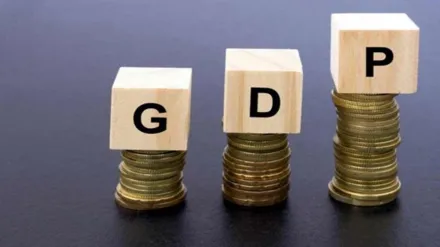India is poised to achieve a GDP growth rate of 6.5% in the current fiscal year (FY26), buoyed by strong domestic demand, a normal monsoon forecast, and expected monetary easing, according to a report by S&P Global Ratings released on Tuesday.
The report emphasizes that India’s domestic demand resilience plays a crucial role in cushioning the economy from global slowdowns, especially in comparison to export-reliant countries.
“We see India’s GDP growth holding up at 6.5 per cent in fiscal 2026 (year ending March 31, 2026). That forecast assumes a normal monsoon, lower crude oil prices, income-tax concessions and monetary easing,” the report stated.
Inflation Trends Favor Economic Outlook
Declining inflation has contributed to a more favorable economic environment. India’s Wholesale Price Index (WPI) inflation fell to a 14-month low of 0.39% in May, down from 0.85% in April and 2.05% in March. The Consumer Price Index (CPI) also showed a significant dip, with retail inflation dropping to 2.82% in May, the lowest level since February 2019.
Food inflation, a critical component of CPI, dropped to 0.99% in May — the lowest since October 2021 — reflecting improved agricultural output and a sustained downward trend over the last seven months.
RBI Policy Supports Growth
In response to the falling inflation, the Reserve Bank of India (RBI) revised its inflation projection for FY26 downward from 4.0% to 3.7%, paving the way for a more accommodative monetary policy. RBI Governor Sanjay Malhotra announced a 50 basis point cut in the repo rate, bringing it down from 6.0% to 5.5%, to spur economic growth.
Regional Comparison and Outlook
S&P’s report also provides insights into the broader Asia-Pacific landscape, where many economies began 2025 on a strong note thanks to domestic demand and a temporary boost from preemptive exports to the U.S. ahead of anticipated tariffs.
In comparison, China’s GDP is expected to grow by 4.3% in 2025 and 4.0% in 2026, below its official target but relatively solid given ongoing external challenges.
The report cautions that Asia-Pacific economies face uncertainties from shifting U.S. trade policies and sluggish Chinese imports. While domestic demand is expected to stay firm across the region, export-driven nations may face greater vulnerabilities.
In conclusion, India’s economic outlook remains optimistic, driven by robust internal consumption, easing price pressures, and supportive fiscal and monetary policies, positioning it as one of the more resilient economies in the region.



















